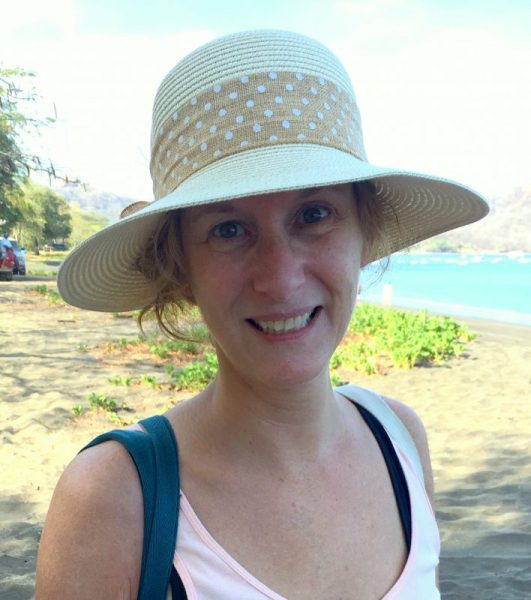Report: Westchester Women Make Gains But Improvement Needed
News Based on facts, either observed and verified directly by the reporter, or reported and verified from knowledgeable sources.

Women in Westchester County made strides to improve their quality of life but continue to significantly lag in earnings behind men with comparable education while facing an accelerating rate of domestic violence.
Those were key takeaways as the Westchester Women’s Agenda presented its comprehensive report last week on the current status of women living in the county, particularly women of color and those who are disadvantaged and underserved.
The 117-page 2022 Report on the Status of Women in Westchester, authored and guided by Sheila Klatzky from the Westchester Women’s Agenda, uses eye-catching graphics and key data to convey information on housing, health, financial and economic welfare, domestic violence and immigration.
The in-person and streamed presentation was held last Thursday morning at the Preston Hall Tudor Room at Pace Law School and was attended by a diverse group of mostly women, including local legislators, elected officials and nonprofit community organizations.
Starting off the two-hour presentation was Westchester Women’s Agenda Chair Colleen Brathwaite who thanked the report’s task force and the vast team who contributed to the report. Notable findings include:
- Violence against women had been steadily declining until COVID-19 before that trend reversed itself.
- The fastest-growing segment of the population are Hispanics, and significant barriers exist for undocumented women including wage theft, lack of overtime pay, paid time off and other worker protections.
- Westchester’s multiracial population has tripled since 2010 from 3 percent to almost 11 percent.
- Asians have the second highest growth rate after Hispanics.
- Westchester’s population continues to age. People over 65 account for more than 17 percent of total population; about 14,000 people in that age category live in poverty.
- The birthrate has fallen dramatically, with deaths outnumbering births.
Positive findings in the report include that women, especially Black women, have earned more bachelor’s degrees than males; improvements are seen in lower poverty and unemployment rates; there’s been an increase in the number of women-owned businesses; and women are living longer and have wider access to healthcare.
Among the report’s numerous recommendations are funding programs to improve Black maternal health services, implement pay equity policies and support access to healthcare for immigrants. Investments in child care, programs to reduce the poverty rate and enabling elderly residents to live safely in their homes were also stressed.
“The two consistent factors that emerged above all others as impacts on women’s lives, and by extension their families and their communities, are affordable care, housing and childcare,” said Lisa Gagnum Boillot, chair of the Status of Women Task Force who contributed to the report. “There is no town or city in Westchester where the rent for a two-bedroom home is affordable to renters earning a local hourly wage.”
According to the recent COVID-19 and Asset Limited, Income Constrained, Employed (ALICE) Report published by the United Way, 37 percent of Westchester households are currently unable to make ends meet.
Childcare in Westchester is unaffordable for working families, Boillot said.
“The child care workforce is predominantly women of color and remains one of the most poorly paid of all occupations,” she said.
Carola Bracco, executive director of Neighbors Link, a Mount Kisco-based organization offering a wide range of free programs to help immigrant families, said women were migrating to this country in higher numbers.
“They are escaping poverty and violence and they play a significant role in our economy as domestic and healthcare workers, as childcare providers,” Bracco said. “They are the ones who prop up dual-income families in our country.”
Each section of the report had a “Good News” and “Bad News” listing. On the positive side, the percentage of women in county government positions increased from 37 percent in 2015 to 46 percent in 2022. In the county executive’s office, women currently exceed men. The unemployment rate for the civilian labor force in Westchester has declined for all ages, genders and racial and ethnic groups.
Conversely, men continue to earn more than women at all levels of education.
CarlLa Horton, executive director of Hope’s Door, which helps domestic violence victims, had a more sobering report.
“We are a fractured and underfunded system rooted in patriarchy and discrimination that really needs to put the safety of women and children first,” said Horton, who has been with the Hawthorne-based organization for 25 years.
Domestic violence crisis calls received at Hope’s Door, My Sisters’ Place and the Pace Women’s Justice Center are up 39 percent over pre-pandemic levels. In 2019, the three agencies responded to 4,893 crisis calls; last year that number grew to 6,797. Overwhelmingly, victims of domestic violence are women and children.
The room fell silent as Horton used first names of women who died at the hands of their companions, including women denied an order of protection days before they were killed, and those fatally beaten while children hid nearby.
Among the report’s many recommendations to address domestic violence were establishing a Westchester County intimate partner violence high-risk team of advocates that would include professionals from law enforcement, the judiciary and healthcare and to expand opportunities for transitional housing and affordable permanent housing.
Westchester Women’s Agenda is a 25-year-old feminist, antiracist advocacy organization focused on improving the lives of women in the county by advancing racial, economic and social equity. For more information, about the organization, e-mail westwomensagenda@gmail.com or visit https://wwagenda.org.

Abby is a local journalist who has reported on breaking news for more than 20 years. She currently covers community issues in The Examiner as a full-time reporter and has written for the paper since its inception in 2007. Read more from Abby’s editor-author bio here. Read Abbys’s archived work here: https://www.theexaminernews.com/author/ab-lub2019/
